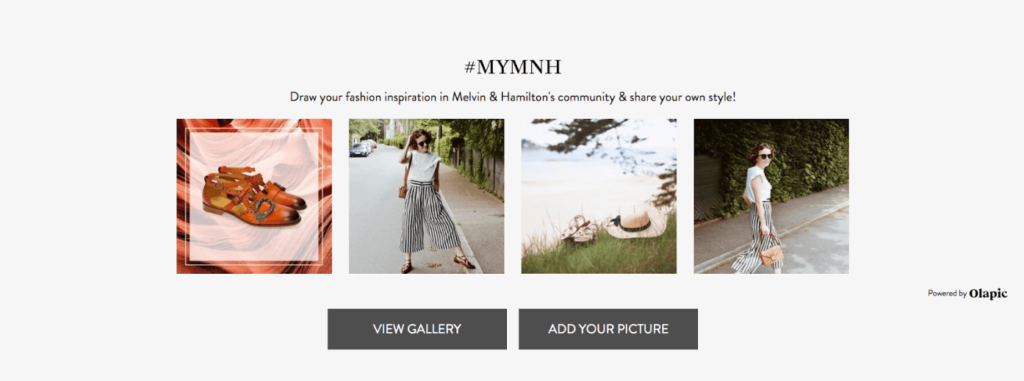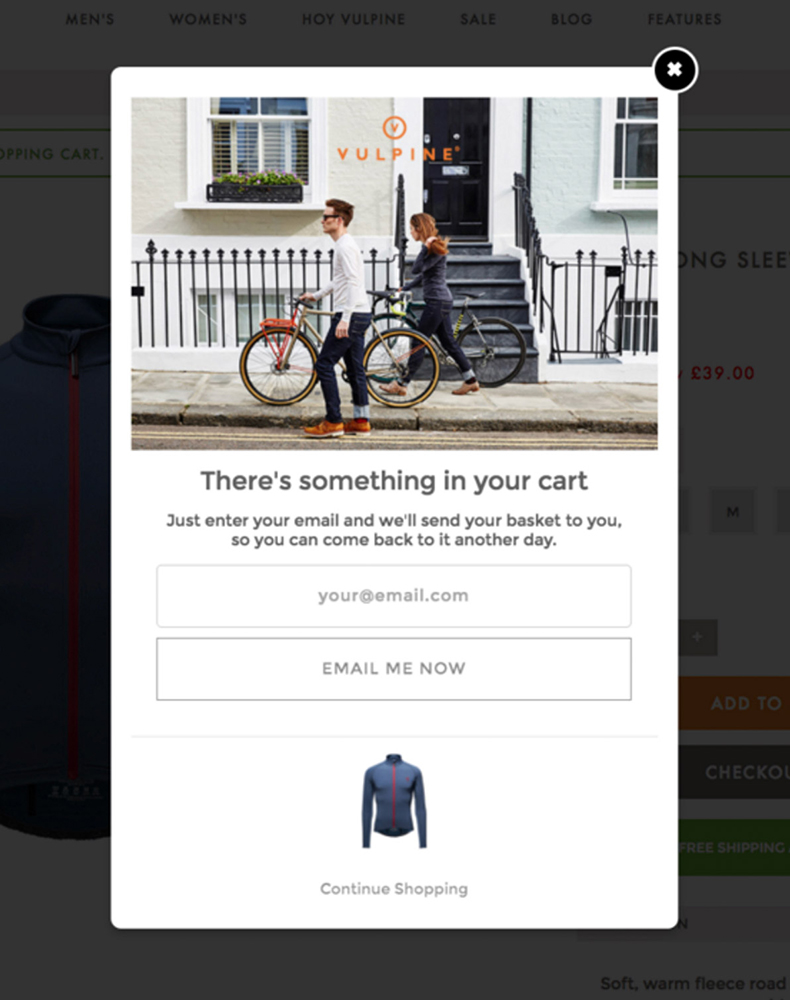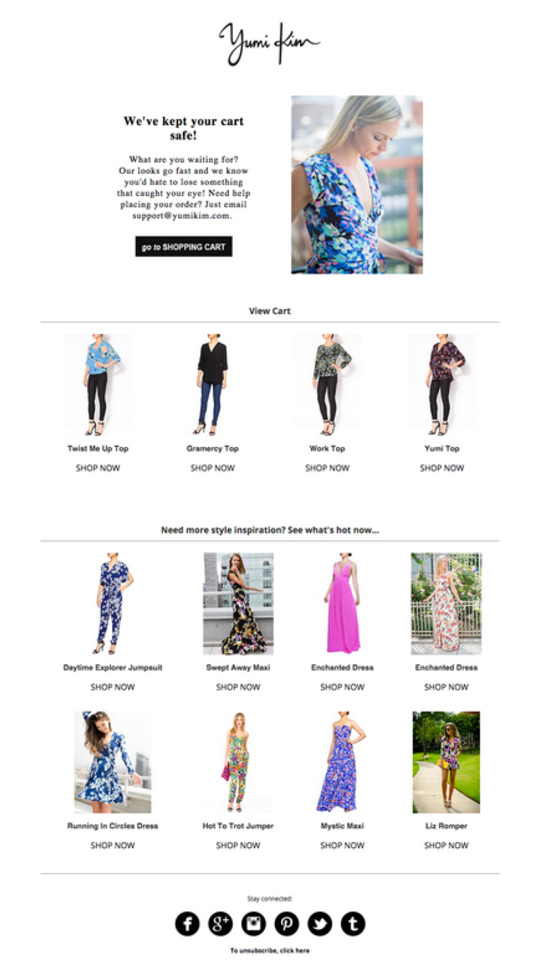Holiday Marketing Strategies that Boost Revenue [7 Tactics]
In this article, we explore 7 holiday marketing strategies to increase conversion, order value and more during the year’s most crucial sales period.
While ecommerce retailers everywhere prepare their holiday marketing strategy for the busy shopping season ahead, there are a number of innovative tactics to consider that can drive more site traffic and increase order value and conversions. This is especially critical during a tough year for the industry where every sale counts.
As you restructure your game plan for these next critical sales months, consider these 7 personalization strategies to make the most of your efforts:
Before we dive in, here are a few reminders on upcoming holidays that impact ecommerce and main areas of focus for both brand and shopper:
December Holidays: Christmas, Boxing Day, Hanukkah, Kwanzaa, New Year’s Eve
Your customer is focused on:
Finding the perfect gift
You should focus on:
Making it easy for them to find what they need
1. Use the wisdom of the crowd by highlighting best sellers and other product recommendations
We’ve all got them – the people on your list who you love dearly, but have no idea what to buy for. Never is the ‘wisdom of crowds’ more useful than for those gift buying decisions. By showing a customer the products that are selling well, or have been identified as particularly suitable for a certain age group or gift recipient, you make the buying decision easy for them.
On mobile, these kinds of thematic browsing options should be highlighted on the front page, as this will inform a customer’s site navigating strategy. But beware of highlighting your ‘Gifts for Dad’ gift guide on an animated carousel – unlike on a desktop, where hovering over a slide will cause the carousel to pause, this isn’t possible on mobile, so customers will often accidentally click on the wrong slide and possibly abandon your site altogether.
By highlighting best sellers, or using recommendations to show items that are frequently bought together, you’re reassuring a buyer that they’re making a good decision (while possibly increasing the average order value). Including reviews with the product details is also an easy way of answering common concerns right there on the product page, and could prevent later returns (which we’ll cover in a later section).

2. Make your site search friendly
Search has been considered the preferred method of product finding on mobile, but it’s also one of the most broken elements of the average mobile shopping site. Most often, Search was the method that led shoppers to wrongly conclude that the site didn’t carry the product they were looking for.
In order to make search work for your mobile shoppers, it’s recommended that you:
- Always offer shoppers the option to search within the category they’re in
- Allow shoppers to filter the search results to category level i.e. when searching for ‘gold’ allow filtering to Jewelry rather than displaying all gold product results.
- Ensure your search function can handle misspellings and synonyms – 70% of ecommerce search implementations are unable to return the correct result unless the customer uses the exact same word as the site (‘mobile case’ versus ‘phone case’ for instance).
- Support thematic searches, such as ‘gifts for him’.
- Always suggest alternatives and suggestions in the event of no result.
3. Leverage user-generated content for stronger social validation
When a consumer has found a product that interests them, there is an expectation for multiple hi-resolution product images. This expectation becomes an absolute necessity during the holiday marketing season when competition is high and shoppers are frantically bouncing from site to site looking for the perfect product.
When adding images to your site for your products, here are a few quick tips to consider:
- The images should be shot from multiple angles and include close-ups, so that every aspect of the product is visible.
- Include more than three to five images on a product page to increase cart volume.
- Adding multiple product images also helps reduce the potential for product returns, as the shopper is able to clearly analyze what they’re buying (which minimizes any unwanted surprises).
- If you really want to master this tactic, incorporate a product video to help the shopper see the product visualize the product further.


By showing a customer the products that are selling well, or have been identified as particularly suitable for a certain age group or gift recipient, you make the buying decision easy for them.
Pro tip: User-generated photography is just one of many ways you can transform the way your products are shown to shoppers. Check out 6 of our top product recommendation examples that can be implemented across key pages of your ecommerce website.
4. Encourage shoppers to stay on your site with pre-exit holiday marketing content
When it comes to finding the perfect deal at any time of year, many shoppers can be indecisive. During the holidays when brands are competing to offer the best offers and products, the chances of a shopper landing on your site and leaving empty handed are higher than ever.
Some call it bribery, we call it incentive – but reeling your shoppers back onto your site with a compelling offer can mean the difference between converting them into customers and losing them to your competitors.
Enter: the pre-exit pop-up.
A once frowned-upon tactic to increase conversion has become one of the top way to keep consumers engaged with your brand. Through the use of behavioral targeting, you can keep indecisive shoppers onsite with a personalized exit pop-up based on each individual shopper’s interests and browsing history.
For example, a new visitor can be offered a pop-up containing a special discount for first-time shoppers, which helps build a positive experience from the start. You can also take this chance to collect their email address to send that discount and boost your email database in the process.

A returning visitor might see products they’ve previously browsed to encourage a purchase.
A visitor who is about to leave your site can be enticed with the products they’ve either left in their cart (if any) or with products they’ve already viewed.
5. Clearly display your product discounts to increase order value and conversion rate
It goes without saying that every part of your website should display discounted items and that these discounts should be pushed to the forefront – but some retailers struggle with finding an ideal way to display them without impacting other product sales.
One way to beef up your holiday sales – especially in your Black Friday strategy when shoppers tend to search for the best deals – is to make discounts as clearly visible as possible. Amend your styling to include the products original price, crossed-out, or even show the exact percentage that would be saved. A change as subtle as this can hugely impact order value and drive the discount home.

6. Maximize the rise in email marketing during the holiday season
42% of buyers prefer to receive emails with personalized content, and it’s these emails that can boast an impressive average Click Through Rate (CTR) of 24% and a conversion rate of 6%. If a customer has bought or even just visited your store before, you can use Nosto’s Personalized Widgets, which allow you to automate the personalization of each email on a 1:1 basis.
You can see below how handbag retailer, meli melo, highlights both popular gifts and previously browsed products, maximizing the chance of the shopper finding something that appeals to them. During the holiday period you can combine this approach with a discount code or further sale promotion, to really increase conversions.

The cart abandonment email
Cart abandonment emails are a great way of counteracting the sky high abandoned cart rates typical at this time of year, and are absolutely GDPR compliant. Using an exit-intent pop-up, as Vulpine does, is the perfect way to capture email addresses and prompt shoppers to go back to items by emailing them directly to them. This solves several problems: it helps shoppers keep track of their items when they browse on different devices (61% of people browse on their mobile then complete their purchase on their desktop), it allows people to email their wishlist to their friends and family, and of course, it simply reminds shoppers of items they’ve left behind.

Tip: You can set up a ‘We miss you’ email campaign using Nosto in just a few clicks!
Your holiday email marketing checklist
- Match your sale type with your customer demographic
- Optimize your email marketing campaign through personalization
- Activate an email collection mechanism on your site
- Ensure your emails render correctly on mobile devices
Extra holiday hints
- If you’re hosting a sale, don’t be tempted to greet your customers with your more profitable items first. They know what they’re there for, so clearly signpost your sale from the front page with a big splash.
- Delight longstanding VIP customers (according to high email engagement, lifetime value, frequency of purchase or average order value) by giving them something extra, such as early sales access or an additional discount.
- Automate as much as you can now, for a low-stress holiday
period!
Finally, and unrelated but still VERY important side note if your business is based in the EU: Check out our blog that covers how to make sure your email marketing is GDPR compliant. This should put your mind at rest that it’s more than possible to be both compliant and effective this holiday season.
7. Managing (and leveraging) product returns after the holidays
Realistically, your business will probably be holding a January sale in the first month of the new year, to clear out old stock and make space for new inventory. To keep the momentum going, it’s importance to create a great customer experience and the opportunity to create long-term fans out of those people who bought from you last year. However, one dreaded reality for ecommerce retailers still lingers: product returns.
The days of faking a grateful smile on the receipt of an unwanted gift appear to be behind us. Delivery company UPS has gone as far as christening the 5th of January National Returns Day, with shoppers returning 1.3 million packages with UPS alone on this day, and more than 5.8 million packages during the first full week of January.
If this sounds like bad news, it doesn’t have to be….
They also found that 45% of people made an additional purchase when making a return online. In some cases, this could even be the first contact they’ve had with your store – so this is a first impression that counts. A bad returns process won’t stop someone making the return, but it will stop them shopping with you again.
How do you make that positive first impression? Online shoppers reported that free returns shipping (60%), a hassle-free policy (51%) and easy to print returns labels (44%) as the three most important factors in a good returns experience.
Increasing Lifetime Value
You might be tempted to think that if someone is buying a gift, they might not be your target market for the rest of the year, since the purchase wasn’t based on their own likes and interests. But don’t be too hasty. An RJMetrics study found that the average ecommerce business acquires 23% of its new customers during the holiday period (the average two month period would normally see 17% of the year’s new customers). While these customers did have a 13% lower lifetime value (CLV), this isn’t too harmful, given the significant increase in overall customer acquisition.
There’s plenty of data around the fact that re-engaging old prospects is more cost effective than going after new customers (the much quoted ecommerce stat is that it costs 5x more attracting a new customer than keeping an existing one), and yet 44% of businesses10 focus on acquisition rather than retention. Creating a positive customer experience via things like returns is one strategy, but re-engaging those for whom you’ve dropped off their radar requires something more proactive.
‘We Miss You’ emails
This is where the email portion of your holiday marketing strategy comes back into play. By using strategies such as sending an email showing other gifts within a few days of the initial purchase you may well prompt a second purchase. Another 42% made their second purchase during the following 10 months – reminding the customer about your store is absolutely worth it, whatever the time of year.
The overall lesson? Holiday shoppers are rarely holiday-only shoppers – it’s essential to get back in touch with your first time customers in January (if not before!).

Kick off your holiday marketing strategy by preparing for the Black Friday rush
With the Black Friday shopping season just around the corner, now is the time to start kicking your holiday marketing strategy into high gear. We’ve kicked off a special mid-year roundup of ecommerce marketing strategies to unveil exclusive tips and tricks for onsite optimization. With these tips, retailers can drive higher traffic, conversion, order value and more to maximize performance in a highly competitive sales period.

![Holiday Marketing Strategies that Boost Revenue [7 Tactics]](https://www.nosto.com/wp-content/uploads/2020/09/blog_holidayseason.jpg)



